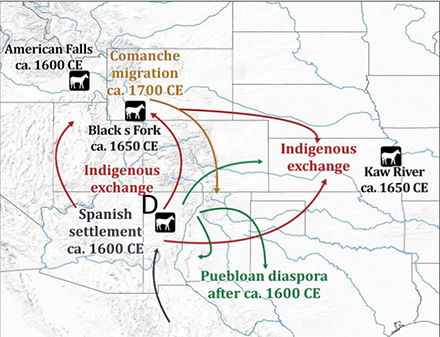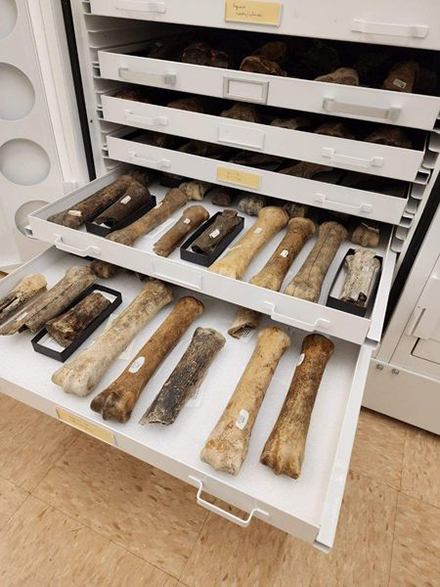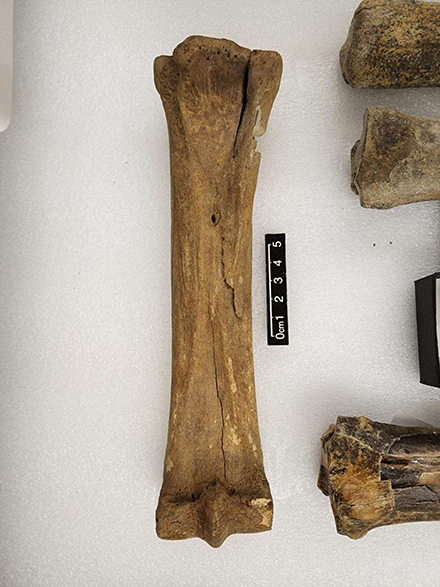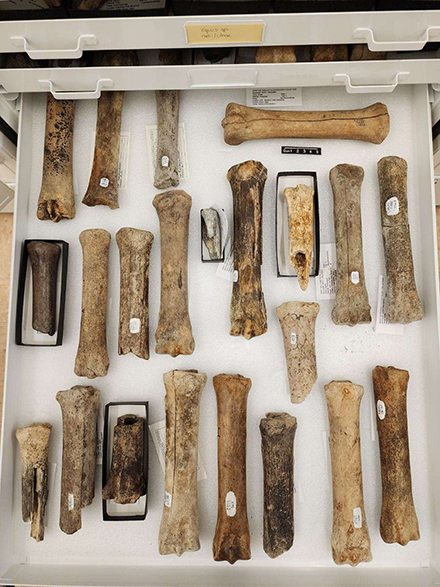Research Rewrites History of the Horse in Idaho

The story of the horse in North America is complicated, but this year, anthropologists and indigenous collaborators found some incredible new twists based on horse remains from the IMNH.
To set the stage: much of the history of horse evolution over the last 52 million years took place in North America before they spread all over the world, and when the first peoples came here at least 20,000 years ago they encountered several horse species, including some in the modern genus Equus. But by ~10,000 years ago horses were extinct on this continent. Starting in the 1500s Europeans brought horses back to North America, many of which spread through indigenous networks and became important cultural animals.
So where does the IMNH come in? Researchers were dating several Ice Age horse fossils from American Falls, and surprisingly (to say the least) one of the bones was from the 1630s, and not a fossil at all! Being in Idaho and from the early 17th century makes this one of the most compelling pieces of scientific evidence that indigenous people were using and spreading horses much earlier than some people thought based on historical records. The team published their findings in Science earlier this year!
William Timothy Treal Taylor et al. Early dispersal of domestic horses into the Great Plains and northern Rockies. Science 379,1316- 323(2023).DOI:10.1126/science.adc9691
Curry, Andrew. "Horse nations." Science (New York, NY) 379, no. 6639 (2023): 1288-1293. https://www.science.org/doi/pdf/10.1126/science.adh9893
Image Gallery



